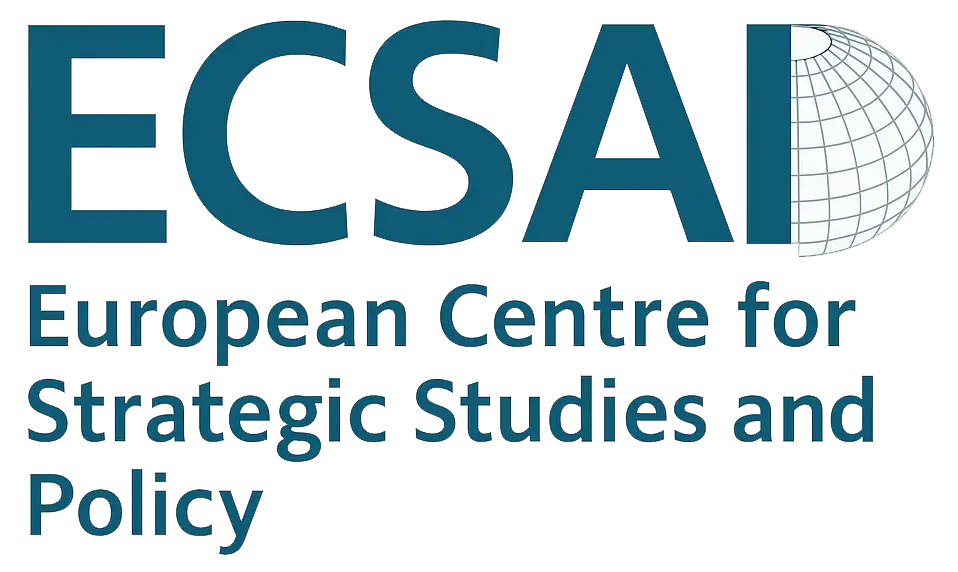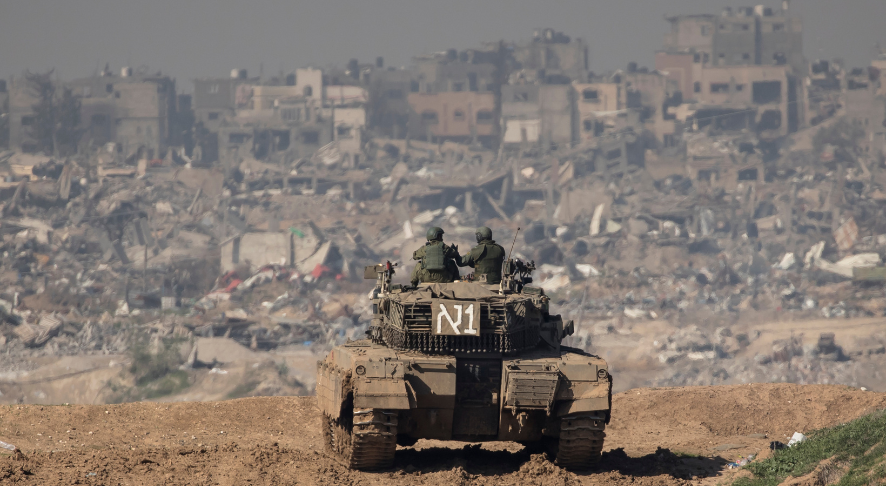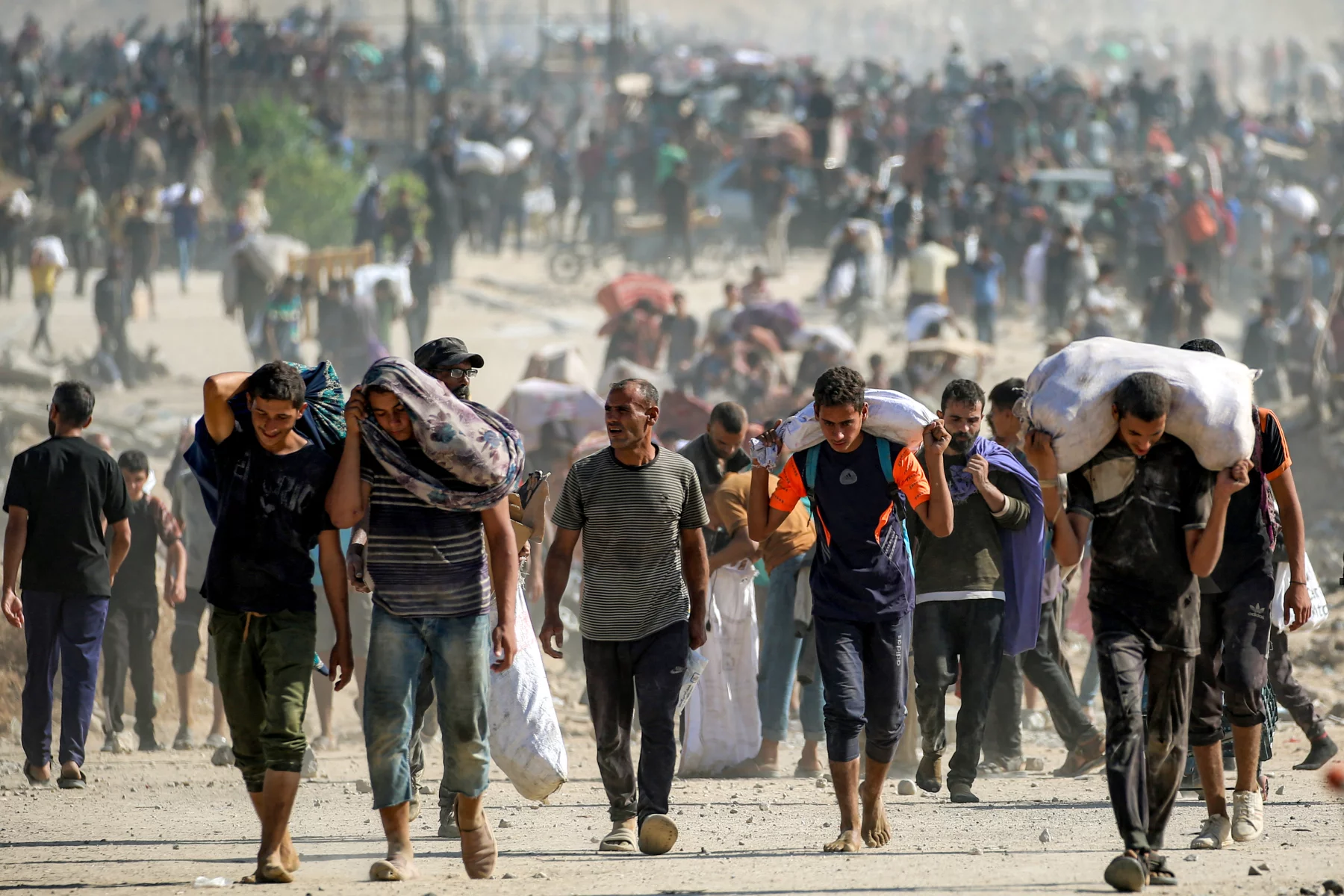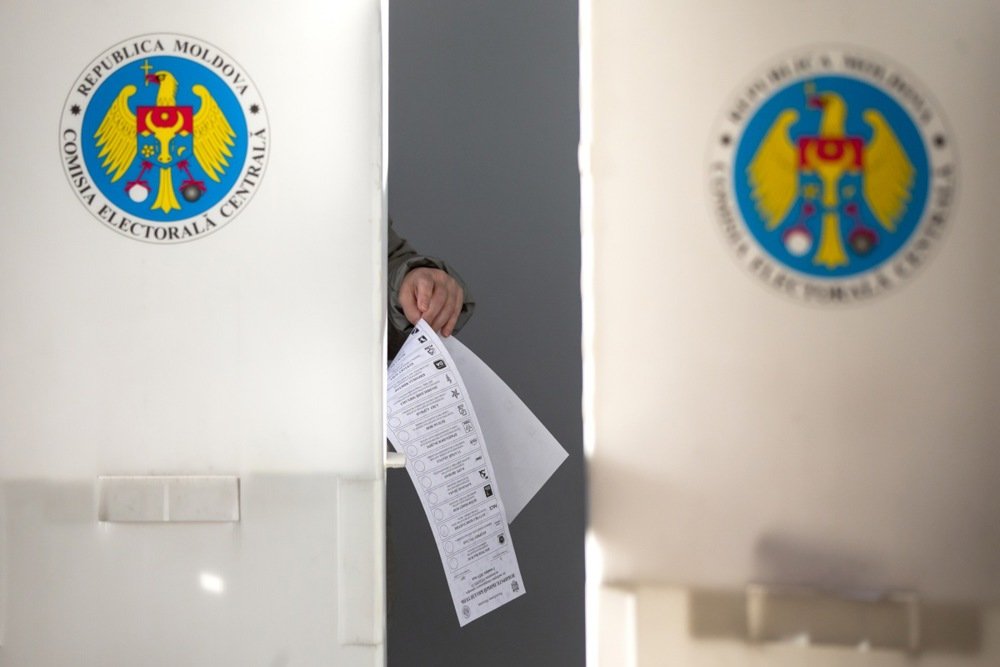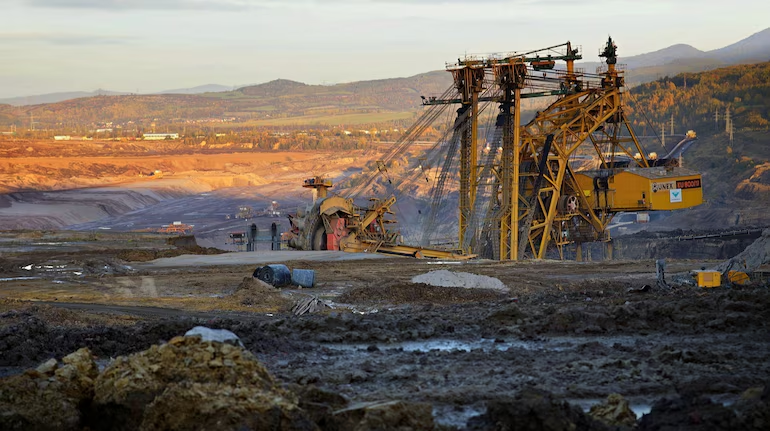European Centre for Strategic Studies and Policy (ECSAP) – Independent Analysis
Executive Summary
Israel and Hamas have agreed to a “first phase” ceasefire—a structured pause coupled to hostage releases, an Israeli redeployment to defined lines inside Gaza, and a large prisoner exchange—under a wider multi-point framework championed by Washington and mediated with Cairo, Doha and others. Implementation is slated to begin within days, with international actors preparing to support stabilisation and early reconstruction.
The agreement is fragile, conditional, and front-loaded: gains (hostage releases, troop pullbacks, aid inflows) are immediate; hard problems (Hamas disarmament, Gaza governance, security guarantees, border regime) are deferred to later phases where spoilers possess leverage. The humanitarian baseline is severely degraded—with rigorous new health data showing >54,000 acutely malnourished young children and famine-adjacent conditions in parts of the Strip—making sustained access, deconfliction, and logistics as strategically vital as political provisions.
Regionally and trans-Atlantically, converging but not identical agendas shape the ceasefire’s next steps. The US “20-point” plan envisions phased IDF withdrawal, Hamas disarmament, and deployment of an International Stabilisation Force (ISF) alongside a temporary technocratic Gaza administration with no Hamas role and no Israeli annexation—ideas echoed (with variations) in recent EU and European Council on Foreign Relations (ECFR) commentary and EU Parliament resolutions pressing for humanitarian access, hostage release, and a pathway back to a political horizon.
ECSAP’s headline judgement: a durable cessation of hostilities and a credible recovery arc are possible but not yet probable. Success hinges on four interlocking pillars:
- Security architecture that reduces Israeli threat perceptions while constraining non-state armed capacity;
- Legitimate interim governance for Gaza with service-delivery capability and a political landing zone that links to a wider two-state track;
- Humanitarian stabilisation at scale transitioning to early recovery and reconstruction under robust oversight;
- External guarantees, monitoring, and conditionality that bind parties to phased benchmarks and deter defection.
If these pillars advance in parallel, Gaza can move from ceasefire to stabilisation within 6–12 months, and to controlled reconstruction beyond 12–24 months. If they do not, relapse risks—intra-Palestinian fragmentation, cross-border fire, northern front spillovers, and governance vacuums—will widen.
1) Strategic Context and What the Agreement Actually Does (and Doesn’t
What is new: The “first phase” is not a final peace but a procedural on-ramp. It couples an immediate exchange (hostages for prisoners) with Israeli redeployment to specified lines, escalated aid flows, and a negotiation lane for subsequent phases (e.g., security force configurations, disarmament modalities, and governance). Mediators (US, Egypt, Qatar; with Turkish and EU roles nearby) will verify and troubleshoot.
What remains deliberately ambiguous:
- Hamas’s future force structure: The end-state ranges from full disarmament to cantonment plus arms control, with intrusive monitoring. Washington’s plan speaks of disarmament; ECFR analysis warns this requires clearer terms, sequencing, and leverage.
- Gaza’s interim governance: The US draft envisions a technocratic caretaker and no Hamas role, with non-annexation by Israel; Arab League tracks have floated a temporary technocratic committee and a reconstruction fund. These schemes overlap yet differ in who appoints, how they are protected, and to whom they are accountable.
- External security presence: The ISF concept is central in multiple proposals yet not agreed—its mandate, contributors, rules of engagement, and host-state invitation are open.
Humanitarian baseline is determinative. Without sustained, high-volume access, malnutrition and disease will keep mortality elevated, weaken social consent, and empower spoilers. Current assessments from OCHA and peer-reviewed work cited by AP/The Guardian paint a dire picture that can only stabilise if aid corridors become predictable and protected.
2) Parties’ Core Interests and Constraints
Israel
Objectives: return hostages; degrade/neutralise Hamas’s military capacity; establish border and tunnel controls; secure international burden-sharing for Gaza’s governance and aid.
Constraints: political polarisation; coalition management; security establishment scepticism about ISF reliability and about any model that leaves Hamas residual power; fear of northern escalation drawing off forces.
Hamas (and other armed groups)
Objectives: survival; political relevance; prisoner releases; relief for Gaza’s population; preservation of some deterrent or political leverage.
Constraints: battlefield losses; international proscription; popular weariness; potential intra-factional rifts over disarmament; exposure to rivals.
Palestinian Authority (PA) / Interim Technocratic Options
Objectives: restore relevance; avoid appearing as “imposed administrators”; secure funds and a role that leads back to a legitimate national horizon.
Constraints: legitimacy deficit; West Bank security pressures; donor fatigue; contention over mandate and sequencing.
Egypt, Qatar, Turkey
Objectives: leverage and prestige through mediation; border security (Egypt); protection of influence networks (Qatar, Turkey); a reduced risk of refugee spillover and Sinai instability.
Constraints: domestic politics; relations with Washington/Jerusalem; reputational risks if ceasefire fails.
European Union / Key European Capitals
Objectives: sustained humanitarian access; lowering regional escalation; rule-of-law framing; revival of a political horizon (two-state parameters); protection of sea lines and energy projects; avoidance of mass onward migration.
Constraints: internal divisions on conditionality; sanctions toolkits vs. mediation posture; limited appetite for high-risk deployments; competing crises. EU institutions and the European Parliament have endorsed aid scale-up, hostage releases, and a path back to politics, but operational choices (e.g., on ISF participation, maritime corridors, and border tech) remain to be taken.
3) Security Architecture: Options, Trade-offs, and Feasibility
3.1 International Stabilisation Force (ISF)
Concept: A multinational formation—Arab-European-transatlantic mix—mandated to secure critical nodes, support demining/UXO clearance, protect aid logistics, and monitor demilitarisation commitments.
- Advantages: neutralises trip-wires (IDF-Hamas contact), professionalises deconfliction, reassures donors; creates space for civilian governance.
- Risks: mission creep, force protection incidents, contested consent; spoilers targeting ISF to derail politics; parliamentary resistance in troop-contributing states.
- Mitigations: clear Status of Forces Agreement (SOFA); robust ROE; Arab lead with EU/NATO enablers; tight mandate reviews; layered ISR and counter-IED support from over-the-horizon assets.
- Feasibility: Medium—depends on host invitations, Arab leadership, and US/EU logistical lift. ECFR and allied analyses stress clarity of TOR and enforcement.
3.2 Border-Centric Security (“Hard Perimeter”)
Concept: Emphasis on border control, maritime interdiction, and subterranean detection (tunnels), with joint operation rooms (Egypt-PA/technocratic body-ISF) and tech support (sensors, drones).
- Pros: tackles most acutely perceived threats; more acceptable domestically in Israel and Egypt.
- Cons: leaves internal security vacuum unless paired with credible civil policing; can morph into de facto blockade if governance/aid lag.
3.3 Demilitarisation and Arms-Control Sequencing
Concept: Phased cantonment, weapons registries, buy-backs, and third-party verification tied to aid and reconstruction benchmarks.
- Pros: aligns incentives; creates compliance hooks (tranches for demilitarisation milestones).
- Cons: verification in dense urban terrain is hard; spoilers can dual-use materials; requires sustained monitoring budgets.
ECSAP view: Security architecture must blend perimeter control, third-party monitoring, and civil policing under interim governance. Without rule-bound internal policing (trained and vetted), demilitarisation will remain cosmetic.
4) Governance: Interim Arrangements and Political Pathways
4.1 Interim Technocratic Administration
The dominant proposal envisages a Palestinian technocratic caretaker with no Hamas role and no Israeli annexation, able to sign service contracts, manage payrolls, and liaise with donors and the ISF.
- Strengths: reduces ideological contention; focuses on delivery; aligns with Arab League staging (six-month reconstruction focus; international fund).
- Risks: legitimacy gap; accusations of external imposition; security overhang without disarmament; continuity risk if later phases stall.
4.2 PA-Linked Model
A PA-anchored structure could restore a single Palestinian fiscal channel, enable PSD and civil service rehiring, and link Gaza to a wider political track.
- Upside: recognised counterpart for donors; governance continuity; line of sight to elections.
- Downside: domestic legitimacy issues, West Bank pressures, and rejection by some actors absent reforms.
4.3 International Trusteeship (De facto)
Rarely stated explicitly, some scenarios approximate a light trusteeship—Arab-European management of aid/security with local technocrats.
- Upside: speed and accountability for funds.
- Downside: sovereignty sensitivities; long-term sustainability doubtful.
ECSAP view: Any model must hard-wire accountability (audits, ombuds), protect civil society, and sequence legitimacy (local councils → sectoral service elections → general elections when conditions allow). Legitimacy cannot be an afterthought.
5) Humanitarian Stabilisation → Early Recovery → Reconstruction
5.1 Phase 0–3 Months: Stop the Bleeding
- Corridors & Deconfliction: 24/7 Joint Humanitarian Operations Centre (JHOC) with live ISR feeds for convoy routing; pre-cleared no-strike lists for warehouses, clinics, water assets.
- Nutrition & Health: Surge RUTF pipelines; MUAC screening across all primary care points; cholera, measles, polio vaccination catch-ups; obstetric kits; trauma referrals. Latest Lancet/UNRWA screening data mandates emergency nutrition scale-up.
- Shelter & WASH: Modular shelters; desalination plants spares; chlorination; mobile wastewater units.
5.2 Months 3–12: Early Recovery
- Cash-Based Assistance (CBA): Digital cash with KYC-lite and fraud analytics; local market revival.
- Utilities: Prioritise electricity micro-grids, solar hybrids, waste-to-energy pilots; rehab of trunk water lines; telecoms partial restoration.
- Jobs: Labour-intensive public works (debris clearance under ILO safety), SME restart grants, professional re-licensing.
5.3 1–5 Years: Reconstruction
- Finance: International Gaza Recovery Facility (IGRF)—multi-donor, with EU fiduciary guardrails and a Palestinian implementing arm; tranches tied to security/governance benchmarks.
- Housing & Urban: “Build back safer” codes; risk-aware zoning; green corridors.
- Human Capital: Remedial education blitz; psychosocial support; scholarships; health workforce rebuild.
Conditionality is essential: EU and partners should link fund disbursements to measurable steps (e.g., arms-control milestones; functioning anti-corruption bodies; uninterrupted humanitarian access). Costs of War and OCHA warn that even a ceasefire today cannot reverse entrenched malnutrition and morbidity without sustained inputs.
6) Economic Baseline and Recovery Levers
- Short-run GDP collapse with massive capital destruction; labour displacement; import dependence; tax base erosion.
- Levers:
- Trade corridors: Rafah/Kerem Shalom with transparent customs and scanner upgrades; maritime piloting (floating pier / EU-backed inspection cell).
- Energy: emergency generation + solar; eventual gas-to-power if political/security allows.
- Fisheries/Agriculture: demining of fields; cold chain; seed and feed inputs; coastal zone reopening under monitored bands.
- Digital & Services: fast-track FinTech rails, e-gov, and BPO niches (diaspora links).
- Guardrails: strict dual-use controls without strangling the economy; anti-diversion tech (track-and-trace for cement/steel; audited project management).
7) Justice, Detainees, and Social Cohesion
- Detainee/Prisoner Files: The first phase includes large exchanges; a transparent registry and ICRC accesspractices are needed to avoid renewed grievances.
- Atrocity Documentation: Preserve evidence (chain-of-custody) for future accountability; ensure survivor services.
- Transitional Measures: truth-telling forums at local level; memorialisation spaces; trauma-informed education.
8) Risks and Spoilers
- Implementation drift: slippage on timelines (hostages, redeployment, aid volumes) triggers reciprocal violations.
- Internal fragmentation: schisms within Hamas; challenges to any technocratic body; armed micro-group freelancing.
- Regional spillover: Northern front escalations pulling Israeli bandwidth; Sinai destabilisation; Red Sea harassment.
- Aid politicisation: access used as leverage; attacks on convoys; disinformation on diversion.
- Donor fatigue: competing crises dilute attention; governance scandals erode political support.
Mitigations: third-party monitoring, public dashboards for metrics, snap-back clauses for violators (sanctions/visa bans/asset freezes), and a reserve stabilisation fund to cushion shocks.
9) Scenarios (12–24 Months)
A) Managed Stabilisation (Probability: ~35%)
- Ceasefire holds with localized violations contained.
- ISF-lite model (Arab-led, EU-enabled) deploys around critical nodes; border regime professionalised.
- Technocratic caretaker delivers services; cash-for-work and utilities reboot reduce desperation.
- Arms-control steps tied to reconstruction tranches.
- Outcome: Humanitarian indicators improve; politics inch forward.
B) Fragile Pause / Pendulum (Probability: ~45%)
- Periodic flare-ups, tit-for-tat strikes; aid surges and stalls.
- Governance shallow; security ambiguity persists; reconstruction halting.
- Outcome: No famine, but no durable peace; donors sustain “holding pattern.”
C) Relapse to Open Conflict (Probability: ~20%)
- Trigger (mass-casualty event, negotiation collapse) cascades; ceasefire architecture fails.
- Regional spillover; maritime and northern fronts heat up.
- Outcome: Humanitarian catastrophe deepens; political tracks freeze.
10) What Europe Can Do (Actionable Recommendations)
- Back the First-Phase Implementation Cell. Offer EU Situation Room liaisons to the mediator hub (Cairo/Doha/SHARM), with civil-military planners and logistics officers to unblock corridors.
- Humanitarian Surge Package (90 days). Fund high-volume nutrition/health/WASH pipelines; underwrite insured convoy fleets; co-finance air/sea bridges with predictable slots. Align with OCHA impact baselines and publish weekly access scorecards.
- Security Enablers, Not Occupiers. Provide enablers to any Arab-led ISF (medevac, ISR, EOD, comms, training) rather than large infantry contributions; set strict ROE and accountability.
- Stand-up the IGRF (Gaza Recovery Facility). Seat EU as fiduciary lead with co-chairs (Arab Fund, World Bank). Disburse by benchmarks (arms-control steps; functioning ombuds/anti-corruption; continuous humanitarian access).
- Border Tech & Customs Integrity. Deploy EU scanning tech, manifest reconciliation, and third-party inspection to keep trade moving while curbing dual-use leakage.
- Legitimacy-First Governance. Tie budget support to service delivery KPIs, independent audit, and civil society access; plan a gradual electoral path when security allows (local → general).
- Protect the Narrative Space. Fund open-source monitoring consortia, counter disinformation on aid diversion, and report malnutrition/health indicators monthly (citing UNRWA/UNICEF/Lancet datasets).
- Deterrence of Spoilers. Pre-notified sanctions and visa regimes for ceasefire saboteurs (any side); maritime security coordination to shield aid lanes and commerce.
- Two-State Horizon Linkage. Use Council conclusions / EP resolutions to keep parameters visible (territorial contiguity, security guarantees, mutual recognition), without over-promising timeline.
11) Indicators to Watch (ECSAP Monitoring Framework)
- Ceasefire Health: daily incident tallies; compliance adjudications; speed of redeployment milestones.
- Humanitarian Throughput: trucks/day; maritime tonnage; MUAC wasting prevalence; WASH functionality; facility open rates.
- Governance Delivery: electricity hours/HH; payroll timeliness; school re-openings; grievance redress cases.
- Security Metrics: weapons surrender/cantonment counts verified by third parties; EOD/UXO cleared m²; border interdictions tied to non-state actors.
- Public Sentiment: polling on security, services, and legitimacy (triangulated with civil society reporting).
- External Support: donor disbursement rates vs. pledges; ISF force generation; EU member-state enabler deployments.
12) Bottom Line
The first-phase ceasefire is a window, not a guarantee. It buys time and space to stabilise Gaza’s humanitarian collapse, install an interim governance core, and shape a security architecture acceptable to key actors. The window will close if progress is sequential rather than parallel—i.e., if aid scales up without security arrangements, or security tightens without legitimate governance and economic oxygen.
Europe has leverage—in money, monitoring, maritime access, and normative framing. To use it well, the EU and member states should front-load enablers, structure conditionality, and protect the ceasefire’s early wins while preparing for long, grinding statecraft. The alternative is a brittle pause, a deeper social unravelling, and a higher-cost crisis later.
Notes & Sources (selected recent items)
- Ceasefire news and contours: Reuters; The Guardian; live coverage; AP.
- US plan & analysis: Al Jazeera full text of the 20-point plan; ECFR critique on post-conflict security; Modern Diplomacy summary.
- EU positions: European Commission humanitarian page; European Parliament resolution (11 Sep 2025).
- Humanitarian baselines: OCHA impact snapshot (7 Oct 2025); AP/Guardian on UNRWA/Lancet malnutrition findings; Costs of War (Brown University) on mortality/indirect deaths.
- Arab/European policy tracks: UK House of Commons Library brief on Arab League plan (Aug 29, 2025).
